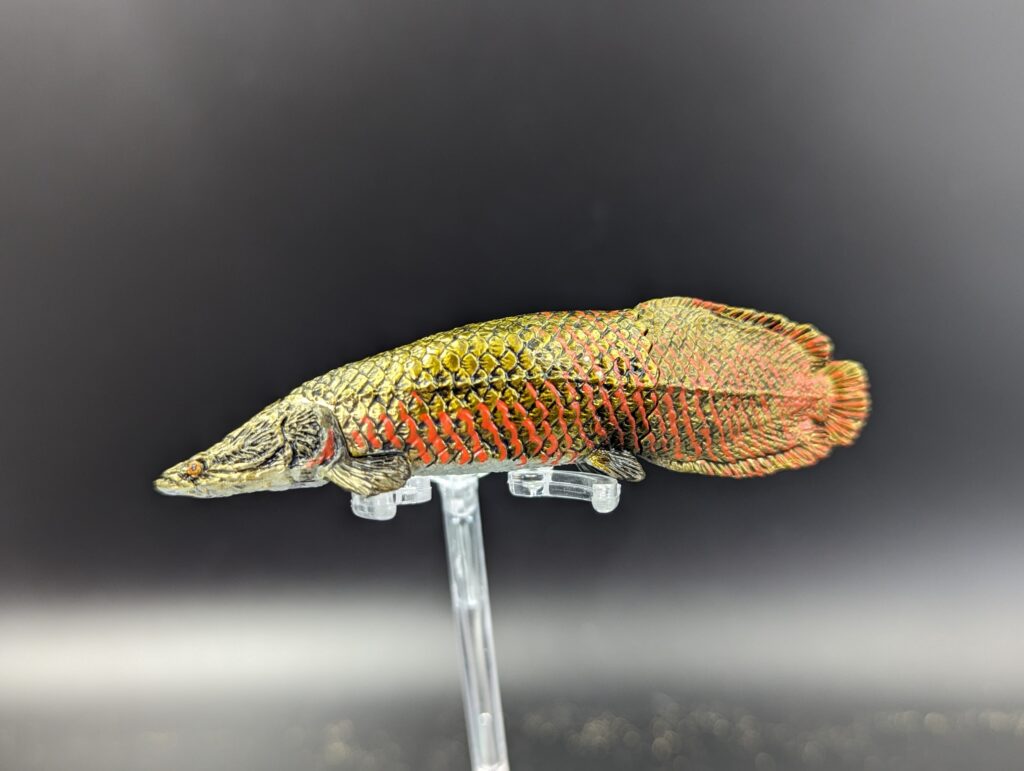
This figure is a another in the Mini Ancient Fish series 2 from Bandai, the arapaima or pirarucu Arapaima gigas. This fish is famous as one of the largest strictly-freshwater fish in the world, naturally located in much of the Amazon river basin. Or at least the genus is…recent studies indicate that many discrete populations are actually unique species; this figure is listed as A. gigas which is overall the most widespread so far (or maybe it’s A. arapaima, studies are still ongoing, we don’t even know how many species there might really be). It is also a fish under intense pressure from habitat loss and fishing, leading to a CITES Appendix 2 listing, but is still considered Data Deficient by the IUCN. But that only refers to their natural habitat–arapaima are a popular (if localized) food fish, and so farming occurs elsewhere, and where farming occurs, so do accidental (hopefully) introductions. In those areas these fish can even become invasive–areas like parts of Bolivia and other regions of South America; Indonesia; and maybe even Florida!
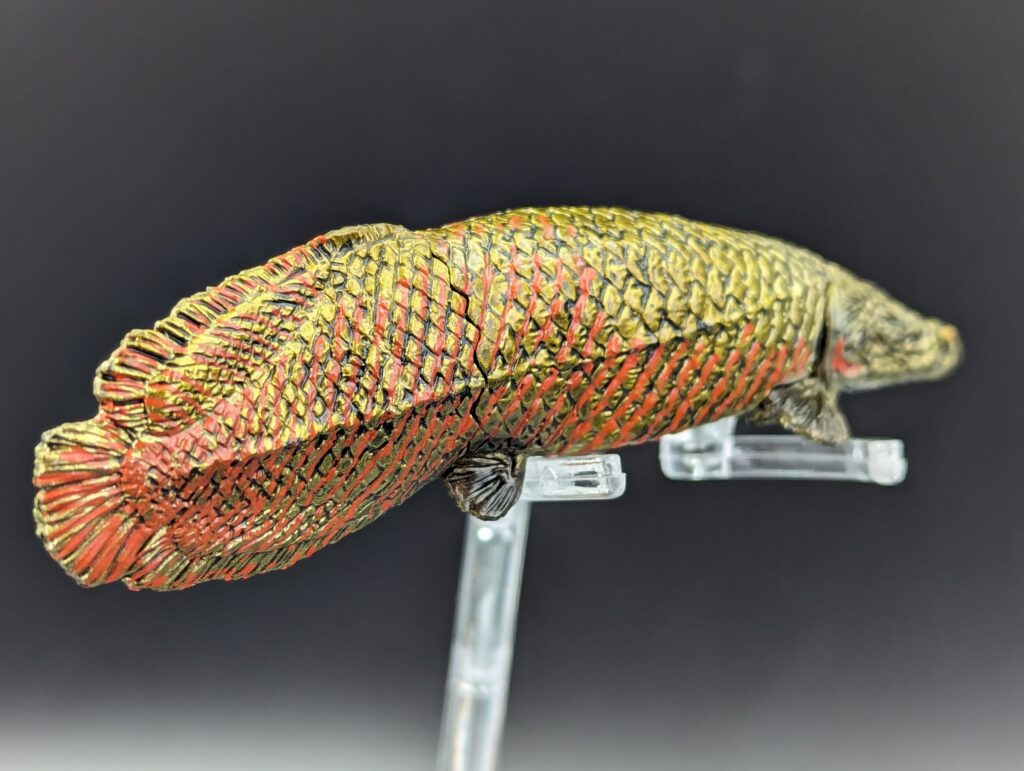
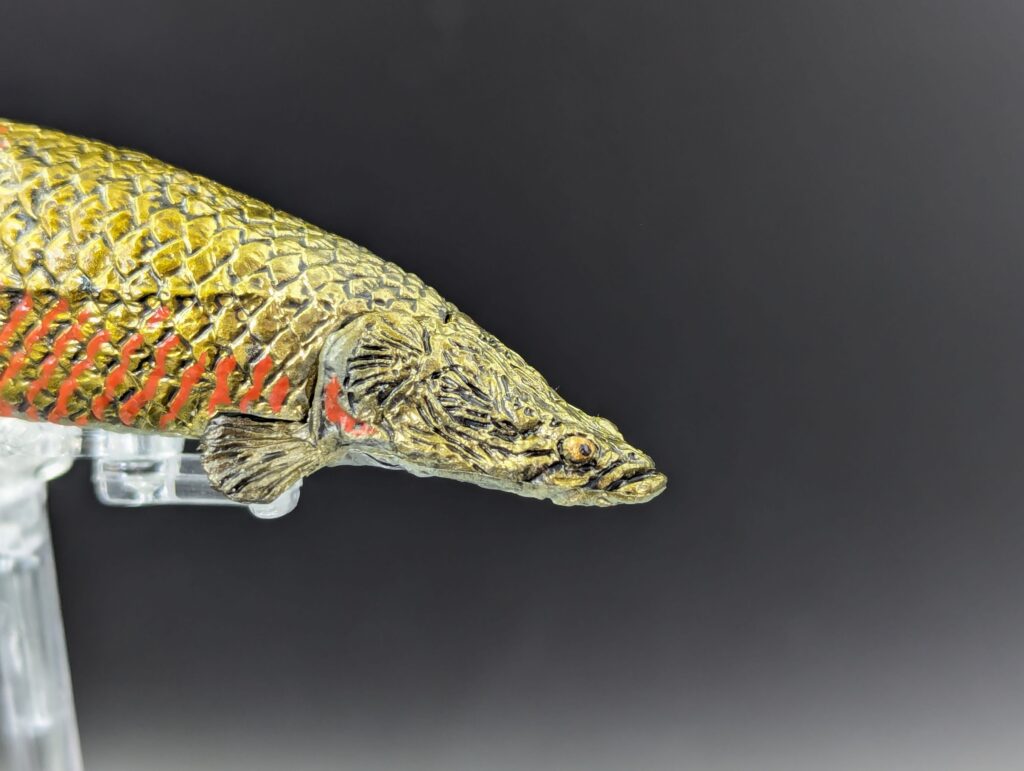
In areas where they are not native, arapaima have numerous adaptations to provide them with success. Like most other osteoglossid bonytongues, adult arapaima are obligate air breathers, giving them advantages in oxygen poor waters. Like bichir and gar (how are there no gar posts yet? Soon…) arapaima have large, incredibly strong mineralized scales (although different in physiology) that are also flexible, giving them great mobility and resistance to most predators. Another major factor is arapaima behaviour. They are very territorial, chasing out any large competitors; and they exhibit strong care of their young–males are mouthbrooders for the hatched young, and females act to protect the male and the young, all of which combines to give a great head start to the young.


Of course, their size helps too–most large specimens seen these days are around 2 metres long, sometimes as much as 3 metres (with unverified records of 4.5 metres) and weights over 100kg. They are voracious predators, with a huge mouth full of small teeth (including on the palate) and their bony tongue, feeding on pretty much anything include crustaceans, fruits, seeds, land animals that are found in the water, and of course fish–including piranha. Again, the bony tongues and very hard scales give a great deal of protection from this toothy prey. Adults don’t have many real predators either–humans of course, and caiman and jaguar will take them if the opportunity arrives.
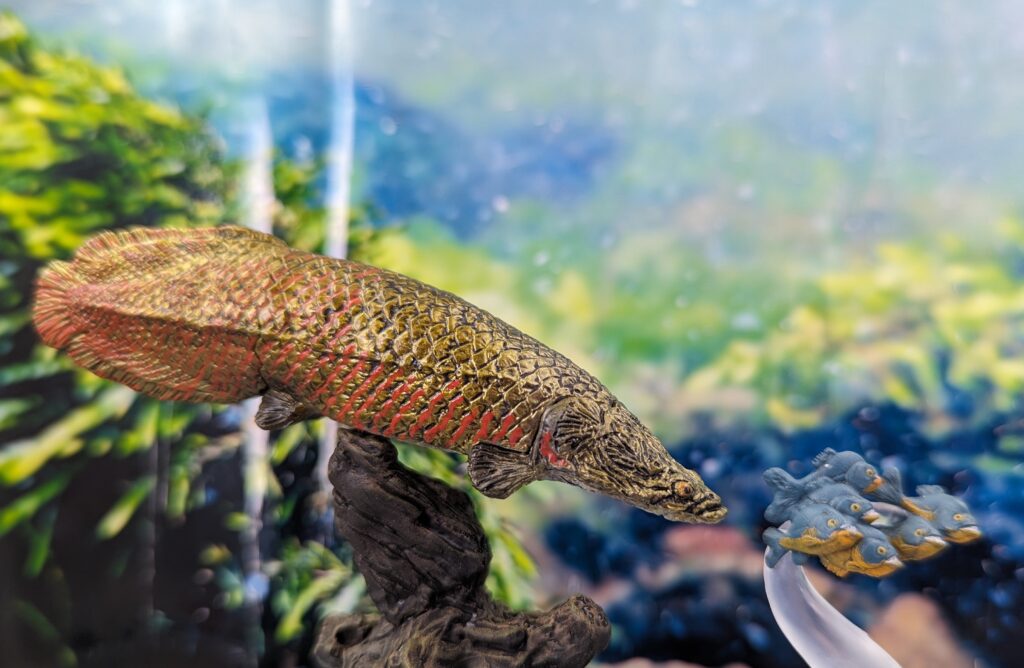
This figure is a marvelous little model, a great entry from the Bandai series. The figure is about 11 cm long, giving a scale of 1:19 – 1:20, decent for many modern animal figures. The body is pretty much straight with a slight downward arc; almost tubular behind the head, becoming more laterally compressed about midway, where the dorsal and anal fins originate. The edges of the body below between the mid-body and the edges of the single fins are even more compressed. A pronounced thick line is sculpted along the middle of the body from the opercula to the tail; maybe this is a lateral line, but it seems pretty thick and ridge-like.

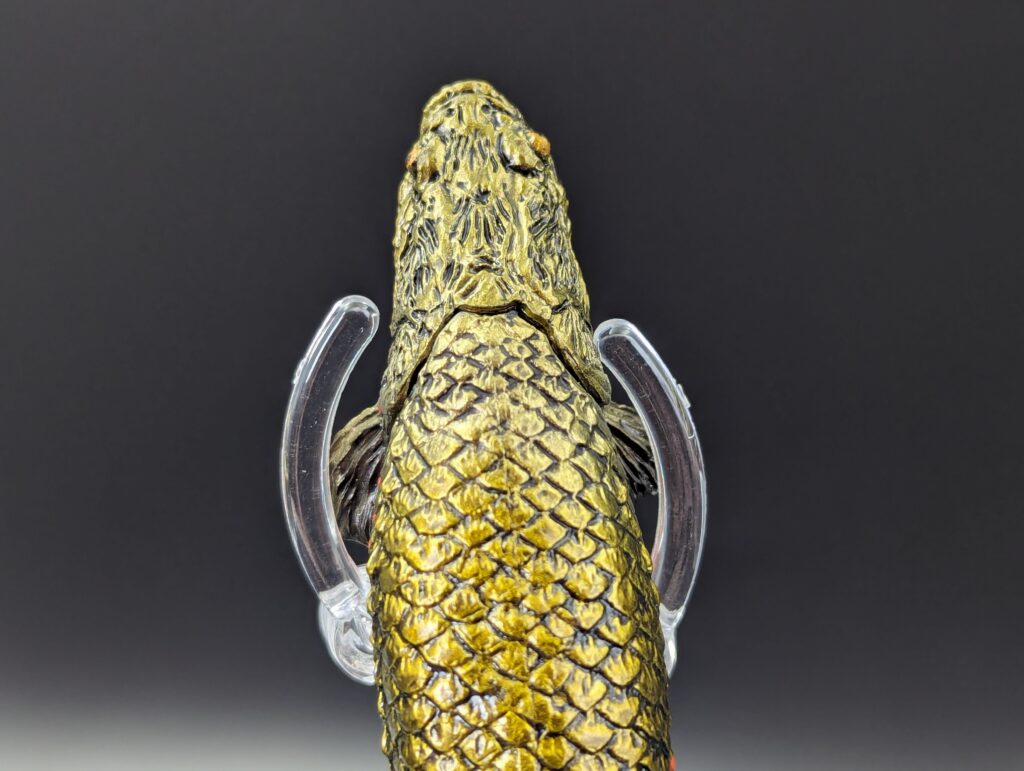
The figure itself is produced in two separate pieces. I always prefer when fish are divided at the opercula as it seems to give a natural divide, but the needs of the production don’t always work. In this case, the body is divided at the line where the anal fin and dorsal fin originate, and the posterior edge of the pelvic fins. The line is not straight, but instead follows the contours of the scales. This at least helps to mask the seam, which is noticeable but not too distracting. There is a third piece; as with the rest of the series, there is a very detailed base for the fish to display, held in place with a small, removable black peg (so if you don’t want to use the base, there is just a very small peg hole in the fish…and the base). For the arapaima, the base is a pile of twisted treed branches and stumps; the fish attaches to the most prominent vertical point. Combined with the shape of the fish body, it poses the fishes as either diving slightly down, or rising gently with the head horizontal (as if rising up to take a big, noisy gulp of air).

The head is sculpted with a scooping shape, with the mouth jutting forward. The head and opercula is sculpted with heavily inscribed lines, indicating the hard, heavy head that gives the arapaima the ability to act as a battering ram. The mouth is closed, with lips protruding forward; above the mouth, the eyes protrude laterally, picked out in a copperish colour with black pupils. The bottom of the head is mostly wrinkled, although there are a number of inscribed lines extending backward.
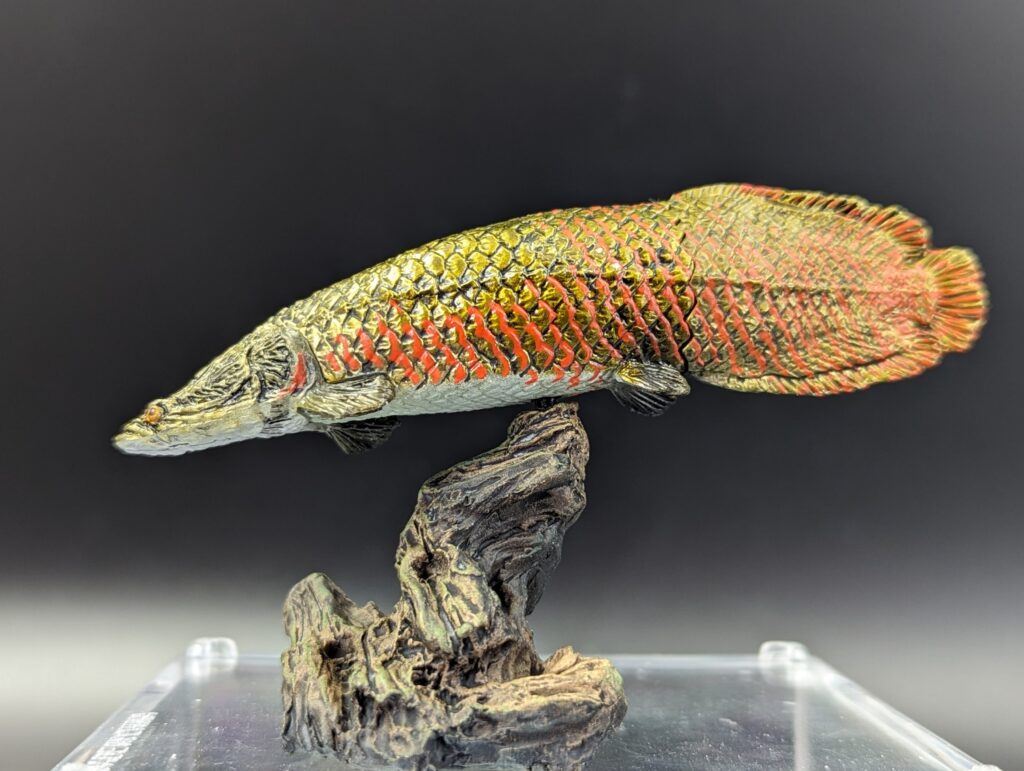
The finnage is well placed, with paired fins show distinct, thick rays and fleshy joints. The anal and dorsal fins are low, increasing in height posteriorly; they look deeper because of the narrowed part of the body that leads to them. Both the anal and dorsal fins lead to the caudal peduncle, forming a near continuous line with the slightly squared off tail.
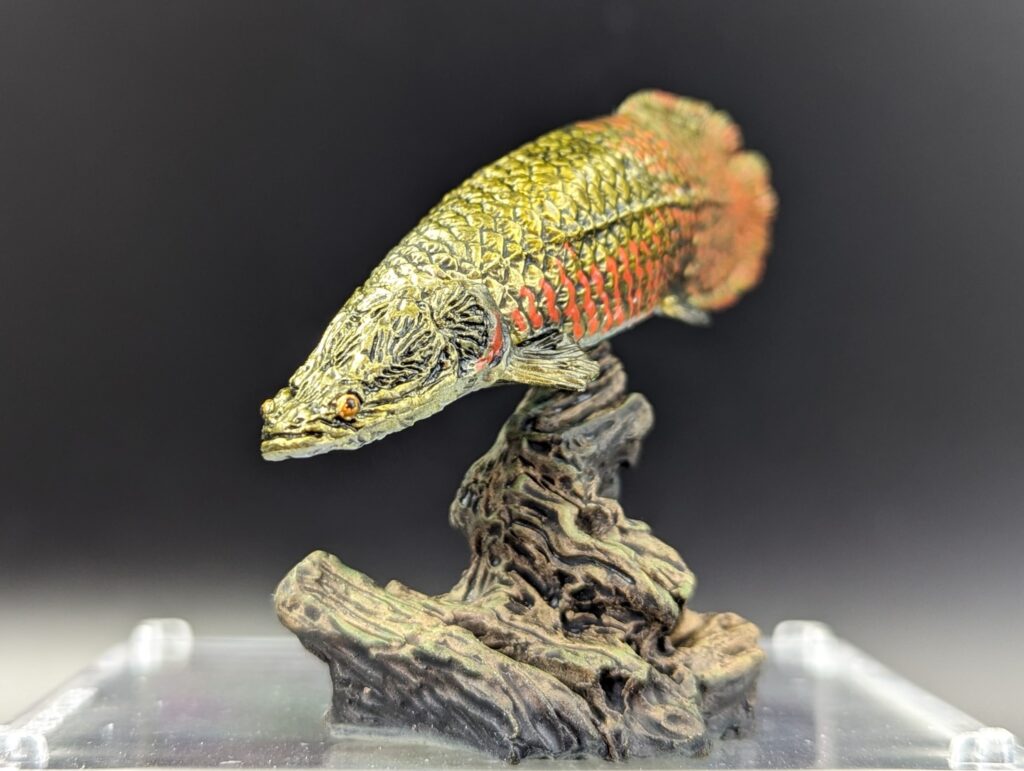
Overall the fish is painted with a dark bronze metallic colour across the dorsum and sides; the belly is white. Much of the body is overlain with red. On closer inspection, the red is not random but specifically along the posterior edges of the scales. The scales are deeply sculpted as overlapping rhomboids, largest at the front of the body and shrinking much smaller towards the tail; the bases of the dorsal and anal fin feature the smallest scales. The scales are slightly raised posteriorly, giving a noticeable texture on each when moving from front to back. There is also a dark wash over the whole model, giving a bit of depth to the fish, and helping pick out the texturing on the head and fins.

Overall, this is a great small model of an iconic freshwater monster. It suits the series of ‘ancient fishes’ well, and is a nice South American companion to the silver arowana in the set (there’s actually a South American trio…I’ll get to that last one soon–it is decidedly not a bonytongue). Of course, no species in this set is as readily available from other companies as the arapaima; this fish has been tackled many, many times in a variety of sizes and styles–and all but one are of course Japanese. I would say that this Bandai one holds up on par or better than many of them and suggest tracking one down while they are relatively easy to find.
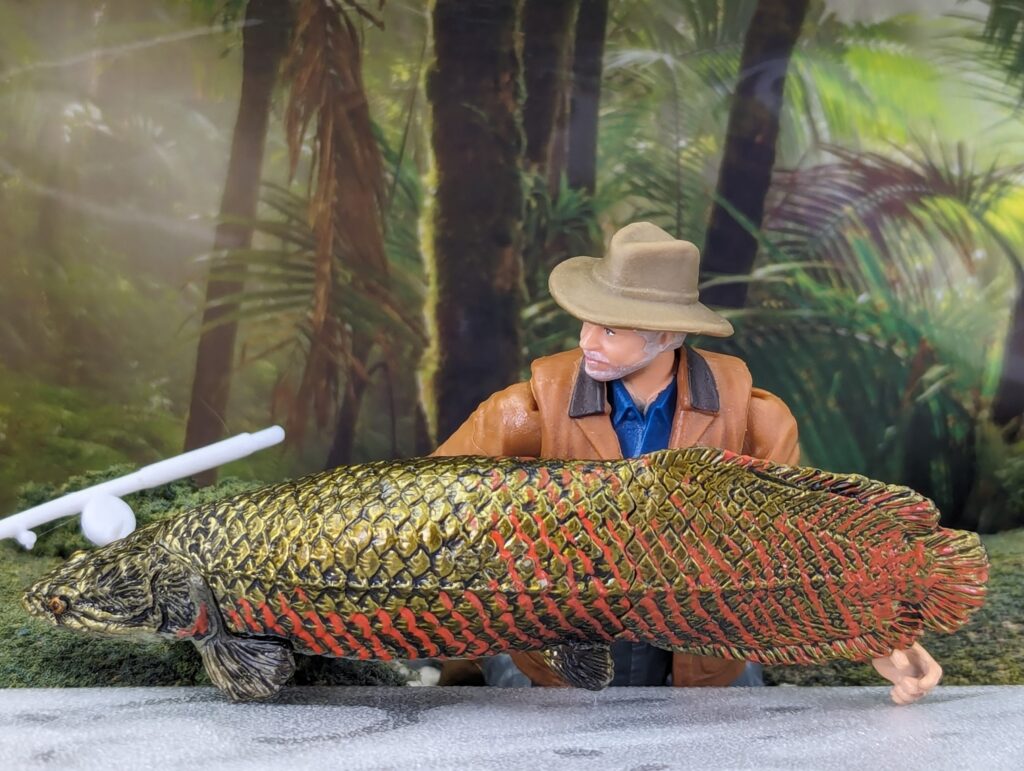
Disclaimer: links to Ebay and Amazon on the AnimalToyBlog are affiliate links, so we make a small commission if you use them. Thanks for supporting us!



